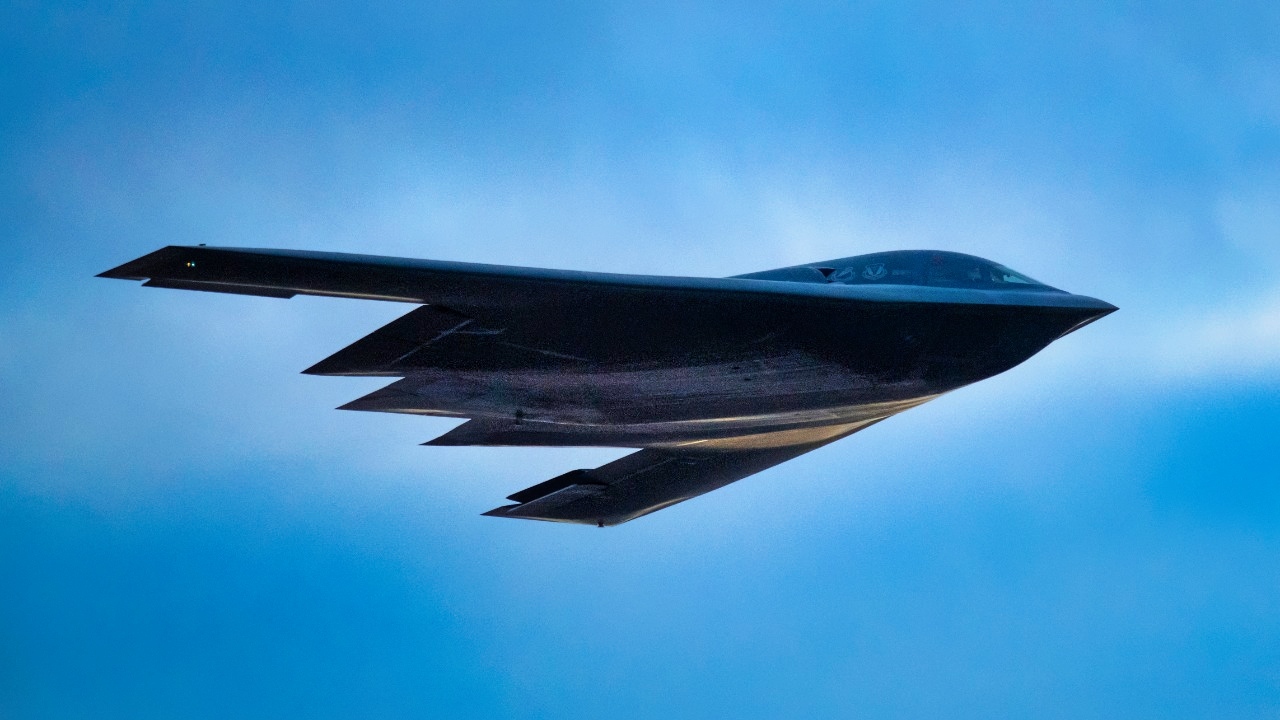America Should Worry: China’s New Anti-Hypersonic Missile Photonic Radar is a Game-Changer
China and Russia have outpaced the United States in hypersonic weapons development, with China now advancing defensive capabilities. China claims to have developed a "microwave photonic radar" capable of tracking 10 hypersonic missiles at Mach 20 with an accuracy of 99.7 percent.
Summary and Key Points: China and Russia have outpaced the United States in hypersonic weapons development, with China now advancing defensive capabilities. China claims to have developed a "microwave photonic radar" capable of tracking 10 hypersonic missiles at Mach 20 with an accuracy of 99.7 percent. Unlike traditional ICBMs, hypersonic weapons are highly maneuverable, making them difficult to detect and counter.
-Chinese advancements also include laser technology for communication, detection, and offense, potentially allowing them to maintain contact with hypersonic glide vehicles even during re-entry.
-Meanwhile, the U.S. lags, still working to perfect its systems. The Chinese radar, which is small enough to mount on defense missiles or planes, further underscores America's diminishing technological edge.
-As China enhances both offensive and defensive hypersonic capabilities, the U.S. faces the prospect of a near-peer adversary that threatens its long-held global military supremacy.
China's Hypersonic Radar: Tracking Missiles at Mach 20 with Precision
The United States is behind China and Russia in the race for hypersonic capabilities. The Americans are still developing their own versions of these systems, while the Russians and Chinese both have working arsenals of these weapons.
Indeed, China is far enough ahead that it is now innovating defenses against hypersonic weapons.
China’s New Radar
A recent report from Stephen Chen at the South China Morning Post cites a professor at Tsinghua University who claims he has “built a radar capable of tracking 10 incoming hypersonic missiles at Mach 20 with unprecedented precision, and it could also identify false targets.”
The report says this new “microwave photonic radar” has an error of only 11 inches in estimating the distance of a missile traveling at nearly 4.3 miles per second. In other words, this new system reportedly has an accuracy rating of 99.7 percent when calculating the incoming hypersonic missile’s speed.
The key thing to understand about hypersonic weapons is not that they are so fast they can outrun any defensive system. Traditional intercontinental ballistic missiles, for instance, are just as fast, if not faster. But hypersonic weapons are highly maneuverable.
What the heck is going on?
To make this system that American scientists in the past have poo-pooed work properly, Zheng apparently incorporated lasers “enabling information transmission between key nodes to reach the speed of light.”
Here is yet another technological area where the Chinese are flying circles around their American rivals: lasers.
American Innovation Being Outpaced by China
Whereas the Americans have been talking about developing lasers for communications, detection, and offensive weapons (laser-guided munitions notwithstanding), the Chinese have built laser systems that can do all three functions.
At their advanced satellite launch facility in Xicheng, it is believed that China has an anti-satellite laser weapon system that can blind any passing by enemy satellites in low-Earth orbit. Meanwhile, the Chinese say they have incorporated laser communications and sixth-generation (6G) internet in their new round of communications for developing hypersonic weapons.
When a hypersonic weapon is re-entering the Earth’s atmosphere, a plasma bubble forms around the platform, cutting it off from all ground communications (and remote control). By merging a laser with 6G internet, the Chinese might be able to beam signals through the plasma bubble and maintain constant contact (and control) over its hypersonic glide vehicle.
Now China says it is using lasers to aid in the tracking (and ultimate shooting down) of incoming hypersonic weapons.
This is a key capability when considering the U.S. Air Force has admitted in sworn Congressional testimony last year that, “Hypersonic weapons are extremely difficult to detect and counter given the weapons’ speed and maneuverability, low flight paths and unpredictable trajectories.”
So, now, China possesses offensive hypersonic weapons capability as well as growing defensive capabilities whereas the Americans are still toiling trying to figure out how to make their systems work.

China Will Beat America at This Rate
Sure, the Air Force has demonstrated its ability to fire hypersonic cruise missiles from B-52s or B-2 Spirit bombers. This is a significant advancement for the Americans. But, here come the Chinese to say, “hold my Baijiu(白酒)” with a hypersonic tracking system that will allow for China to do that which US Air Force General Glen D. VanHerck has testified is not possible: defend against incoming American hypersonic weapons.
Oh, and according to the SCMP report, “The microwave radar is small and light, making it suitable for loading on to air-defence [sic] missiles or planes” making it a “key technology for the next generation of fire-control radars.”
America is now operating in a geopolitical environment in which Uncle Sam is no longer the undisputed global hegemon. He is surrounded by rival great powers that possess near-peer capabilities, and some technological military capabilities, that when applied to China’s near-abroad, could devastate the expeditionary, relatively small U.S. military. This is especially concerning if the U.S. military can no longer rely on its technological superiority to serve as a decisive force multiplier.
Author Experience and Expertise: Brandon J. Weichert
Brandon J. Weichert, a National Interest national security analyst, is a former Congressional staffer and geopolitical analyst who is a contributor at The Washington Times, the Asia Times, and The-Pipeline. He is the author of Winning Space: How America Remains a Superpower, Biohacked: China’s Race to Control Life, and The Shadow War: Iran’s Quest for Supremacy. His next book, A Disaster of Our Own Making: How the West Lost Ukraine, is due October 22 from Encounter Books. Weichert can be followed via Twitter @WeTheBrandon.
All images are Creative Commons or Shutterstock.
From the Vault
Russia Freaked Out: Why the U.S. Navy 'Unretired' the Iowa-Class Battleships
Battleship vs. Battlecruiser: Iowa-Class vs. Russia's Kirov-Class (Who Wins?)


